Elliot Washor on How Real-World Learning Transforms Education
Key Points
-
Putting relationships and relevance together is how you get the rigor and the vigor.
-
You have to do before you know.
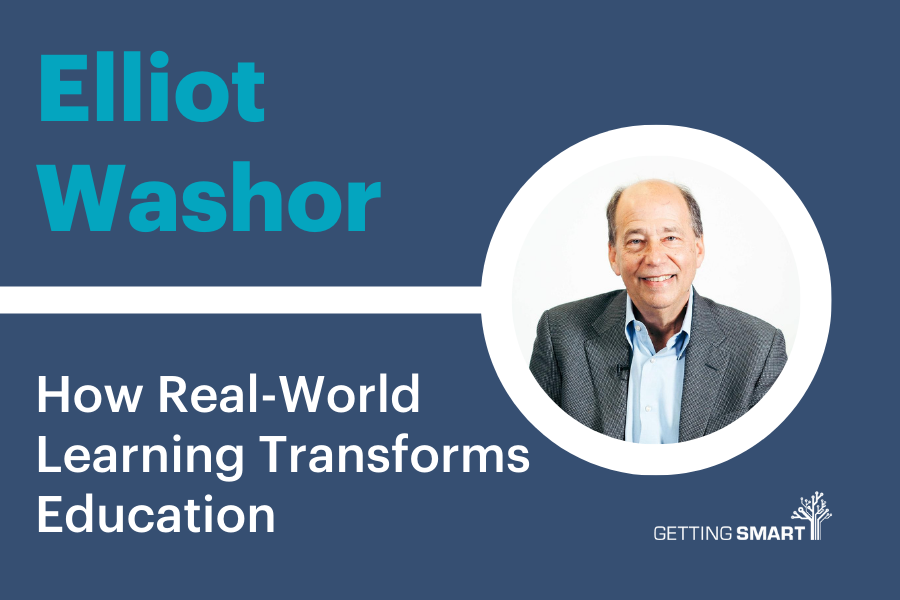
On this episode of the Getting Smart Podcast, Tom Vander Ark is joined by Elliot Washor, the co-founder of Big Picture Learning and author of the great new book Learning to Leave: How Real-World Learning Transforms Education. This book is the followup to the great Leaving to Learn: How Out-of-School Learning Increases Student Engagement and Reduces Dropout Rates.
Elliot is also the co-founder of The Met Center in Providence, RI and has been involved in school reform for more than 50 years as a teacher, principal, administrator, video producer, and writer. He has taught and is interested in all levels of school from kindergarten through college, in urban and rural settings, across all disciplines. His work has spanned across school design, pedagogy, learning environments, new forms and new measures for learning, and is supporting others doing similar work throughout the world. Elliot’s interests lie in the field of how schools can connect with communities to understand tacit and disciplinary learning both in and outside of school. Elliot is deeply committed to imagining Big Picture Learning as a ‘do-think-do’ organization, and persistently pushes the boundaries of its design in order to continually innovate practice and influence in the world of education especially for those youth living in communities furthest from opportunity.
Transcript
Tom Vander Ark: After leading innovative New England schools and collaborating with Ted Sizer to help launch the Coalition of Essential Schools, Elliot Washor and Dennis Littky launched Big Picture Learning in 1995. The following year, with support from Rhode Island’s Commissioner Peter McWalters, they opened The Met in downtown Providence. I visited in 1999 and had a chance to talk with the first graduating class. It was, and remains, one of the most innovative school models I’ve encountered, centered on a radically simple idea of educating “one kid at a time.” In this model, students leave school two days a week to learn within their communities. Now, nearly 30 years later, Big Picture Learning is widely recognized as a global leader in work-based and experiential learning. You’re listening to the Getting Smart Podcast; I’m Tom Vander Ark, and today, I have the pleasure of speaking with our good friend, Elliot Washor, co-founder of Big Picture Learning. Elliot, welcome. It’s a real treat to see you.
Elliot Washor: Thanks, Tom. Good to be here and good to see you.
Tom Vander Ark: After my second visit, a great book came out titled One Kid at a Time: Big Lessons from a Small School, written by another Elliot—Elliot Levine. That book really put Big Picture on the map. Ted Sizer and Tom Peters wrote the foreword. How did you manage to get such an impactful book out so quickly, only a few years after starting the school?
Elliot Washor: Well, Dennis and I had been working in education for a long time, and The Met was built with intention—designed to impact locally, statewide, and even internationally. We wanted this model to be both local and global. Elliot Levine was a postdoc at Harvard and became an advisor. He conducted research on our work, and the outcome was that book.
Tom Vander Ark: It’s a remarkable book. It really helped elevate your profile early on. Let’s go back to the beginning—where did this idea of learning by “leaving to learn” come from, especially with students leaving two days a week? It’s a radical concept.
Elliot Washor: It came from both Dennis and me. Dennis was more focused on relationships, while I leaned toward relevance—learning outside of school, which was central to my own experiences. We believed that real rigor comes from this blend of relationships and relevance, or what we call “vigor.” We tried it in other schools but felt we weren’t going far enough. We realized one day wasn’t enough; it needed to be two days a week for it to truly define what school should be.
Tom Vander Ark: I remember The Met being in downtown Providence, in the Shepherd Building—right in the same building as the Commissioner’s office. Did Peter McWalters support the idea from the start, or did you have to convince him?
Elliot Washor: Not at all. Peter was fully supportive from the beginning. He helped bring stakeholders from the community, government, unions, universities, and industries to the table. People like Stanley Goldstein, Debbie Meier, Seymour Sarason, and Howard Fuller were involved. Peter had to navigate a new approach to high school within his department because The Met wasn’t a charter or a typical public school. It had statewide enrollment, meaning students could come from anywhere in Rhode Island, and it was directly funded in the state budget. We had to get approval for each aspect of our approach, including advisory systems, competency-based learning, and real-world learning plans. It was a unique process that required monthly board meetings to gain support.
Tom Vander Ark: Your model certainly challenged traditional norms. There were many rules broken with your approach, especially around competency and flexibility.
Elliot Washor: Yes, exactly. We faced resistance because people were used to a specific set of regulations and authority. But we had the backing of the Board of Ed, which helped us push through.
Tom Vander Ark: I remember opening MetWest in Sacramento, and we had to align Big Picture’s model with California standards. You’ve spent years helping people understand how your model fits into existing systems. How has that experience shaped your work?
Elliot Washor: There are so many stories like that. For instance, when Gates funded our expansions to Oakland and Sacramento, the University of California (UC) system had questions about how our model served marginalized students. We created a competency-based A-G course requirement document that allowed students to spend time outside school for projects and real-world experiences. As mastery became the focus, time constraints faded into the background. We’ve always prioritized growth over time, spanning four years of high school.
Tom Vander Ark: Your book Leaving to Learn was pivotal in chronicling Big Picture’s approach. Now, with support from the American Student Assistance, you’ve written a new book, Learning to Leave: How Real-World Learning Transforms Education. What’s behind the shift from “Leaving to Learn” to “Learning to Leave”?
Elliot Washor: Leaving to Learn focused on increasing engagement and reducing dropout rates, addressing policy-level issues where students were often blamed for system failures. It highlighted the need for schools to fit students, not the other way around. Learning to Leave is about recognizing that reforming the current system is nearly impossible. It’s about creating new approaches, measures, and a shift toward community-driven, rather than institution-focused, education.
Tom Vander Ark: ASA’s president, Jean Eddy, emphasized the need for students to gain real-world experience in middle and high school. I loved how your book ended with a dialogue with Julie Lammers from ASA about real-world learning at scale and its policy implications. ASA has been a strong partner, right?
Elliot Washor: Absolutely. They understand that learning happens everywhere, not just in school, and that it needs to be credited both inside and outside traditional settings. We’re working to support young people in finding mentors, engaging in meaningful work, and building relationships based on interests and choices. It’s not just about jobs; it’s about finding meaning in life through work you love, which in turn drives more learning and growth.
Tom Vander Ark: You’ve been talking about going “deep inside the outside,” where students engage in real-world learning that’s both meaningful and relational. Can you elaborate?
Elliot Washor: Sure. Real-world learning must also include family and community. Schools often measure narrowly, overlooking these broader learning experiences. We need to design systems that measure meaningful engagement intentionally, not by accident. Our work is about transitioning from practice to policy, from learning to teaching, and making teaching secondary to learning.
Tom Vander Ark: You’ve also worked globally, establishing Big Picture schools in places like Australia and New Zealand. Can you talk about spreading this model internationally?
Elliot Washor: Yes. We only go where we’re invited; places like Oakland, Sacramento, and Baltimore called us, and we responded. Our goal has never been to have a massive number of schools but to influence American public education and credit learning happening inside and outside of school.
Tom Vander Ark: I recently read about Ryan Craig’s argument that AI will benefit those with experience most, creating an “experience gap.” He argues that students need real-world experience by high school to effectively leverage tools like AI. Do you agree?
Elliot Washor: Absolutely. AI is useful only if you’ve had real-world experiences. I saw an article recently about AI passing freshman year at Harvard with a 3.4 GPA, which didn’t surprise me because it’s all textbook knowledge. Without personal, hands-on experiences, AI just replicates rote answers. Experiential learning provides context, and that’s essential when using AI effectively.
Tom Vander Ark: Your book’s chapter on new measures highlights the International Big Picture Learning Credential (IBPLC) from Australia. Can you explain this credential and its significance?
Elliot Washor: The IBPLC was developed by our team in Australia, led by Viv White. They partnered with the University of Melbourne, which used psychometrics to create a system that values teacher judgment, student self-assessment, and mentor input. This credential allows students to enter universities and careers without traditional tests like the SAT. It’s an innovative approach that shows how students are smart, not just how smart they are by conventional measures. We’re exploring partnerships in the U.S. to bring this here.
Tom Vander Ark: You’ve also partnered with the American College of Lifestyle Medicine to promote health and wellness. Could you share more about that?
Elliot Washor: Sure. We’ve adopted six evidence-based health measures: sleep, movement, a plant-based diet, managing stress, building healthy relationships, and understanding the effects of substances. Schools often overlook these, but they’re foundational for learning. Without wellness, education suffers. This partnership helps us focus on prevention rather than intervention.
Tom Vander Ark: Those wellness measures are essential. Many current systems focus on crisis prevention rather than promoting wellness. This is a valuable shift.
Elliot Washor: Exactly. We need to move from intervention to a prevention-focused approach, embedding wellness into daily routines.
Tom Vander Ark: What’s next for you and Big Picture?
Elliot Washor: We’re working on BP Living, which integrates wellness into education. We’re also focusing on community rather than institutional change, emphasizing mentorship and real-world engagement. Dennis Littky is advancing the college side with College Unbound, creating an ecosystem where students can transition between real-world experiences and college education seamlessly.
Tom Vander Ark: Elliot, do you have a takeaway for our listeners? What’s the one thing you’d like educational leaders to focus on
Elliot Washor: Prevention over intervention. Recognize that learning is personal and relational. We need to shift from industrial terms like “customized” and “personalized” to truly personal learning. Schools should pay attention to real-world learning and credit that outside-the-classroom experience. Use platforms like ImBlaze and Be Unbound to help manage and track where students are, allowing them to learn deeply both inside and outside of school. Learning isn’t just about academics; those will come naturally. It’s about connecting students to meaningful, real-world experiences.
Tom Vander Ark: Learning to Leave is a fantastic book, and I highly recommend it. Elliot, you’ve been a beacon of experiential learning, and your global contributions have profoundly influenced education. We appreciate you and your new book, which calls for new ways, forms, and measures of learning. Thank you for being here and sharing your insights.
Elliot Washor: Thank you, Tom. And I’d like to encourage everyone to get involved in contributing new ways, forms, and measures. This journey is ongoing, and we all have a role to play in moving education forward.
Tom Vander Ark: Thanks to our producer, Mason Pashia, and the entire Getting Smart team for making this show possible. We also thank our friends at ASA, not only for supporting Elliot’s book but also for their New Pathways campaign. Until next time, keep learning, keep leading, and keep innovating for equity.
Links:




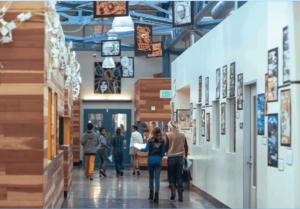
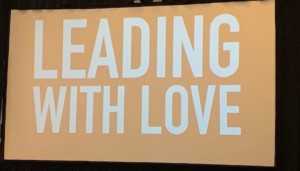
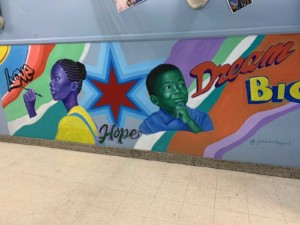
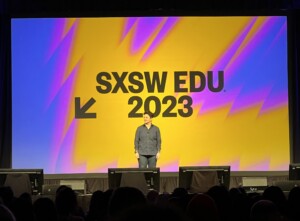
0 Comments
Leave a Comment
Your email address will not be published. All fields are required.